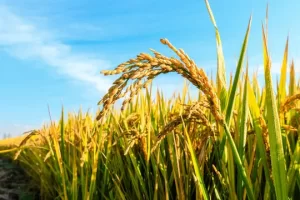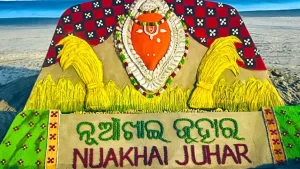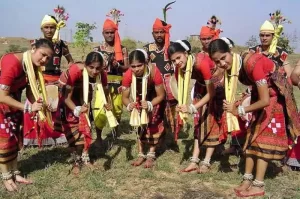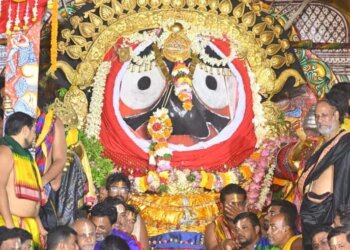Odisha has 13 festivals in a year, one of which is Nuakhai, a Sambalpuri celebration famous in Western Odisha. Tribal people, primarily engaged in agriculture, densely populate the area. This is why they celebrate Nuakhai. The literal meaning of Nuakhai is ‘Nua’ for new and ‘khai’ for eating. Families revere the fresh harvest crops and celebrate by enjoying the first rice together.
Nuakhai Juhar is the practice of giving gifts to loved ones, congratulating them on the occasion, and gathering as a family to represent unity. People put aside their conflicts and create a new connection. People greet each other in the evening by seeking blessings from elders.
This exemplifies the kind of unity, fraternity, and bonding festivals have in our culture. The festival finishes with folk songs, dances, drama expressing local culture and tradition of the various folds of society.
Today, millions of houses in Odisha are brimming with the joyous atmosphere of Nuakhai, a paddy harvest festival marked with much pomp and excitement. The agrarian connotation is central to the Nuakhai celebration, as it is to Punjab’s Baisakhi, Assam’s Bihu, Kerala’s Onam, and Tamil Nadu’s Pongal.

Farmers in western Odisha grow the ‘saria’ paddy type specifically for the event, which they harvest 60 days after seeding. These districts widely celebrate Nuakhai: Kalahandi, Sambalpur, Balangir, Bargarh, Sundargarh, Nuapada, Sonepur, Boudh, and Jharsuguda.
The harvest holds such significance that it is revered as a valuable blessing from the gods. It is initially offered to the local presiding goddess, in accordance with the beliefs of the community. Upon the offering of the cooked rice to the deity, family members come together and eat various local cuisines made of freshly harvested rice, with sweetened rice cakes being a hot favourite amongst the kids as well as grown up.
Objective:
The objective of this festival is to celebrate social bonding and accelerate family ties. Following the Hindu calendar, the day falls on the Panchami Tithi of the lunar fortnight in Bhadrapada (August–September) months, the day after the Ganesh Chaturthi festival. Nuakhai is also called Nuakhai Parab. It has great significance for farmers and the agricultural community”.
People from all across the country travel to their hometowns on this day to commemorate the festival by donning new clothes, praying, and cooking special meals.
The celebration dates back to the Vedic period, when rishis debated Panchyajna. The Pralambana yajna is intended for planting new crops and praying to the mother goddess.

Historical Background:
Since the 12th century AD, this celebration has been held. This event is celebrated with joy and gladness. Chauvan Raja Ramai Deo hosts the event in Patanagarh, which is now part of the Bolangir district of Odisha.
The king recognized the significance of agriculture in the state’s economic prosperity. So he made sure to change the practice of hunting and gathering to an agrarian way of life in western Odisha.
Significance:
The Nuakhai festival teaches the present generation about the importance of agriculture and the role of farmers in the growth of the country.

Nuakhai Celebration:
Preparation begins two weeks before the festival’s start date. This event has nine sets of ceremonies that begin in Behrana and end in Juhar Bhet. Here are the nine colors in order of appearance.
Beheren – This is the announcement of the meeting date to be determined.
Lagna dekha – This is observed to determine an accurate date for the consumption of new rice.
Daka haka – Daka means to call or invite and this is the invitation. It’s an invitation.
Sapha sutura and lipa-puchha – This is all about cleanliness.
Kina bika -This is the purchase and sell of the rice harvest.
Nua dhan khuja -This is to find a new crop.
Bali paka -This is for offering prasad to the deity.
Nuakhai -This ritual is popular and it is observed to eat the new crop after offering it to the deity, followed by dancing and singing.
Juhar bhet – It is taking blessings on elderly people and sharing gifts with them.







 Finance
Finance







